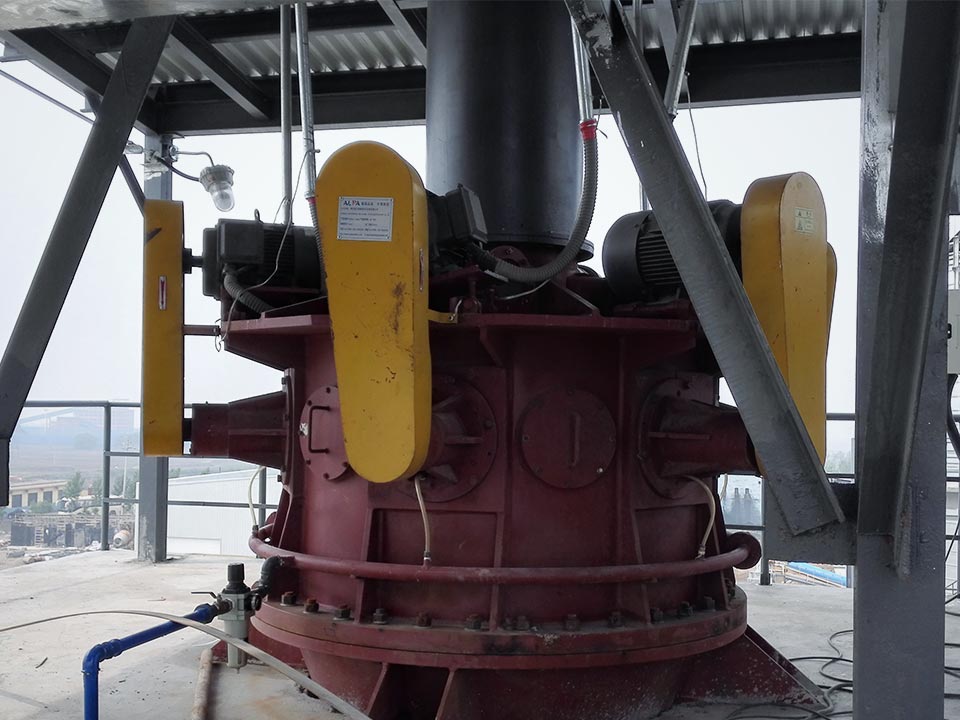What are the characteristics of the ultra-fine grinder
Superfine grinders are used in many industries such as food, pharmaceuticals, industry, etc. The advantages of superfine grinders are also very significant.
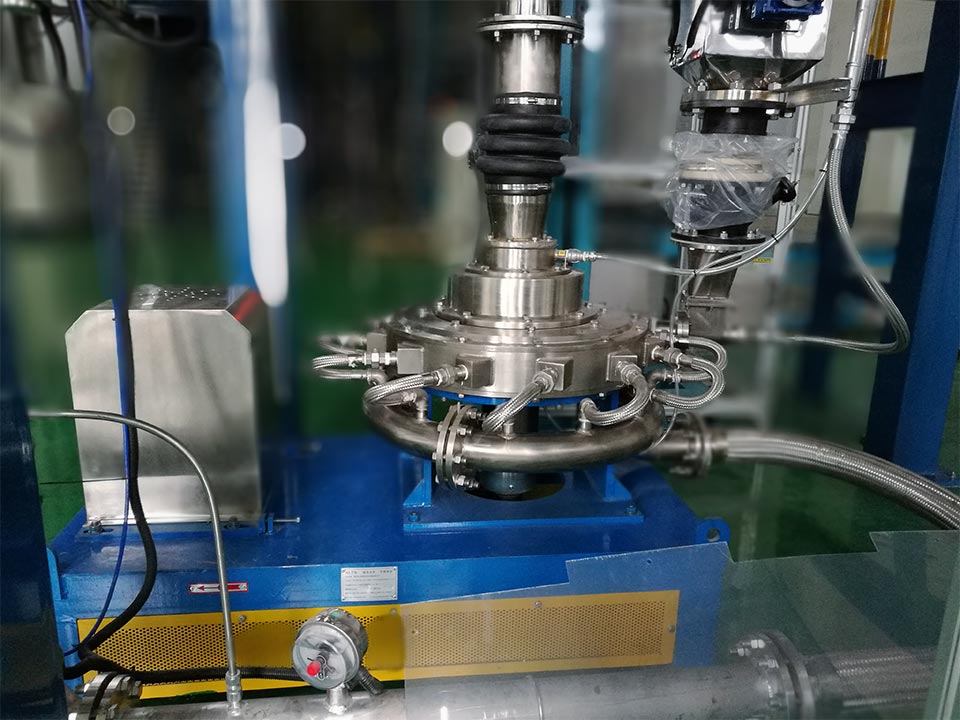
1. High grinding efficiency: almost no loss and no residue. Under the two-way action of high-speed impact force and shear force, the grinding time is greatly shortened and the grinding efficiency is improved.
2. High grinding fineness: most animal and plant materials can be ground to 150 mesh to 2500 mesh.
3. The grinding temperature of the ultra-fine grinder is low-in the case of continuous operation, its temperature will not exceed 40 degrees.
4. Low grinding cost: less labor, short time, completely airtight grinding process without dust overflow, and no loss of active ingredients. There is very little material loss, which can greatly reduce production costs.
5. Simple operation: optimal configuration of capacity, to ensure complete discharge of materials, simple operation and material change.
6. Convenient maintenance of the ultra-fine grinder: compact structure, small floor space, convenient maintenance and repair.
7. Clean and hygienic: smooth inside and outside, one machine with multiple functions, reduce pollution and lighten cleaning burden.
8. Wide range of applications: It can be adapted to materials with fibrous, high toughness, high hardness or a certain moisture content. For pollen and other spore plants and other materials that require cell wall breaking, the wall breaking rate is higher than 95%.
9. Improve the environment: The fully enclosed operation has no dust overflow and no slag generation, which can improve the working environment.
10. The safety of the ultra-fine grinder is strong: the parts in contact with the material are all polished stainless steel, and the material is the general material of international medicine and food machinery, avoiding heavy metals such as arsenic, cadmium, mercury, lead, and copper.
Reasons and solutions for the coarse particle size of the ball mill
Too coarse particle size of the ball mill discharge may be due to many reasons, and the solution to each cause will be different. We need to come up with a corresponding diagnosis and treatment plan.
The main reason for the excessively coarse particle size of the ball mill: the “roughness” of the ball mill refers to the abnormal phenomenon that the fineness of the mill product is significantly coarser and difficult to control. It generally appears in the double-chamber open-circuit tube mill with a relatively small length and diameter. Excessive capacity of the coarse grinding chamber and insufficient capacity of the fine grinding chamber are the main reasons for "roughness". In this case, even if the output of the ball mill is appropriately reduced, the fineness of the product is still relatively coarse. The coarseness of the product due to the excessive feeding volume does not belong to this example.
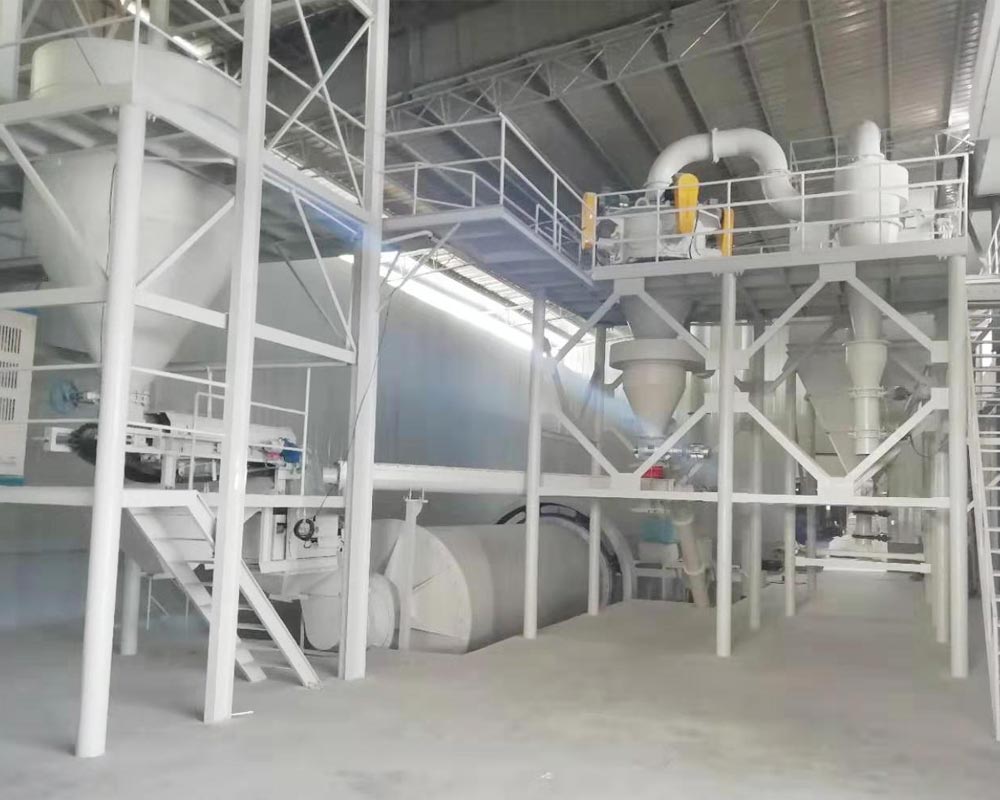
The reason why the grinding capacity of the coarse grinding chamber is significantly higher than that of the fine grinding chamber:
1) The filling rate of the grinding body of the coarse grinding chamber is too much higher than that of the fine grinding chamber;
2) The average ball diameter of the steel balls in the coarse grinding chamber is too large;
3) The length of the fine grinding chamber is too short;
4) The wind speed in the mill is too high;
5) Unreasonable grinding body gradation;
6) The grate seam of the compartment board or the discharge grate board is too large.
When "rough running" occurs, the cause should be found out, and specific measures should be taken to solve it. Generally speaking, if there is no such phenomenon and other conditions have not changed, it is just that the grinding body is newly equipped. It is likely that the average ball diameter of the coarse grinding chamber is too large, the filling rate is too high, or the grinding body gradation is unreasonable. For small tube mills with a small length-to-diameter ratio, use 1 to 2 balls more in the grading of one bin, or appropriately increase the filling rate of the fine grinding bin, and appropriately increase the lifting capacity of the fine grinding bin liner, which can solve this problem. problem.
Measures to improve the lifting capacity of the lining of the fine grinding chamber include: on the one or two circles of the lining before the feed end, every other piece of the lining can be welded with a steel bar or square steel that can form a 15-20mm convex corner. The first few laps of the liner were replaced by a flat liner with a corrugated liner: the severely worn flat liner was replaced with a new liner every few rows.
What to do if the sound of the ball mill is too loud when using it
The ball mill is a commonly used grinding equipment in the beneficiation plant, which plays a pivotal role in the beneficiation process. However, it has the disadvantages of high noise and short noise propagation distance. Not only will it seriously affect the working conditions of employees, but it will also harm their ears and seriously damage their physical and mental health. With the development of modern technology and the improvement of industrial noise pollution, it is very important to reduce the noise during the work of the ball mill through effective termination methods and create a quiet and comfortable production environment.
The ball mill will produce strong vibration and noise when grinding materials, the noise is as high as 100~115dB, which is harmful to the operator and the surrounding environment. The noise of the ball mill is very high, which has always been a concern for the users of the ball mill.
The noise of the ball mill is mainly caused by the collision between the metal balls in the drum, the cylinder wall liner and the processed materials. The sound radiates outward along the liner, the cylinder wall, and the inlet and outlet of the material, including the impact sound between the steel ball and the steel ball, the impact sound between the steel ball and the liner, the impact sound and friction sound of the material. The noise level of the ball mill is related to the diameter and speed of the ball mill, as well as the properties of the material and the block size. The noise of the ball mill is basically steady-state noise, which has a wide frequency band and high sound energy with low, medium and high frequency components. The larger the diameter, the stronger the low frequency component.
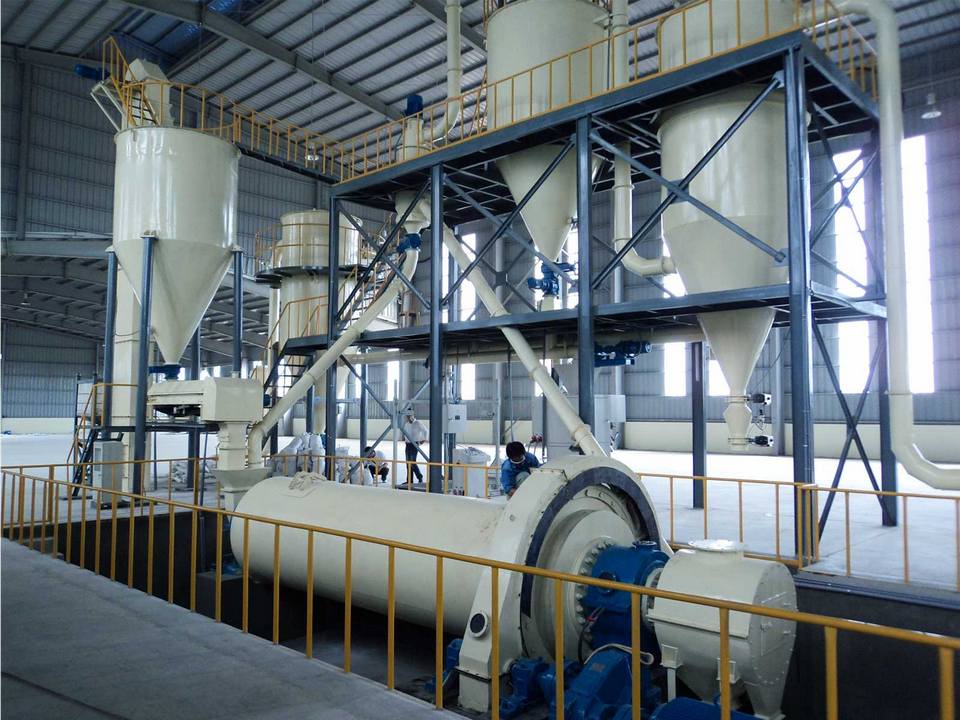
Noise reduction method of ball mill
- Add a soundproof cover to the ball mill
The soundproof cover can be divided into fixed type, movable type and curtain type. The fixed sound insulation cover has high sound insulation, but it will make the ventilation and heat dissipation performance of the workshop worse, and the maintenance and repair of the equipment will be difficult. On the basis of the fixed sound insulation hood, the movable sound insulation hood is improved and the maintenance performance is improved, but the sound insulation capacity is reduced, the ventilation and heat dissipation problems have not been solved, and it needs to occupy more space and space. The curtain-type sound insulation cover was developed to solve the contradiction between the large space occupied by the movable sound insulation cover and the venue, and it has the advantages of disassembly and assembly. The advantages of flexible installation and centralized storage are still poor ventilation and heat dissipation and high prices.
- Replace manganese steel lining with rubber lining
This method is one of the technical measures to radically reduce the noise generated by the cylinder based on the mechanism of the noise generated by the ball mill. The rubber liner is easy to install and has a good damping effect. When the bush is impacted by a steel ball, the impact duration can be increased, and the noise reduction effect is obvious. However, when choosing a rubber liner, attention should be paid to rubber plates with good high temperature resistance and wear resistance. At the same time, a heat-resistant soft rubber pad can be placed between the inner surface of the ball mill drum and the liner. In order to prevent the soft rubber pad from overheating, an industrial felt with a thickness of 10-15mm is placed between the liner of the ball mill and the soft rubber pad. The noise of the ball mill can be reduced below the allowable standard.
- Strengthen the ventilation, heat dissipation and noise reduction treatment of the ball mill equipment
The noise of the ball mill is not only related to the influence of the equipment itself, but also closely related to the production material itself. For many production materials, a large amount of heat is generated during the contact process of steel balls, which may directly affect the effect of noise reduction measures. Therefore, in the working process of the ball mill, attention should be paid to the ventilation and heat dissipation of the ball mill equipment, and the heat generated during the production process should be treated in time.
- Add the ball milling chamber
If conditions permit, concentrate the ball mill room in a special ball mill room, and change the ball mill room into a special soundproof room, the effect will be better than the soundproof cover. However, it is necessary to pay attention to solving the problems of monitoring, indoor heat dissipation and maintenance during the operation of the ball mill.
Bentonite processing technology
Bentonite is a clay rock with montmorillonite as the main mineral component. It often contains a small amount of illite, kaolin, zeolite, feldspar, calcite and other minerals. Bentonite is a precious non-metallic mineral resource with more than 1,000 uses and is known as the "universal material". Bentonite can be divided into calcium-based, sodium-based, magnesium-based, sodium-calcium-based, and magnesium-sodium-based according to the different cations between the montmorillonite layers.
Bentonite is generally white, gray, pink, yellow, brown and black in various colors, and its shape is often earthy cryptocrystalline mass, sometimes in the form of small scales and spherulites. Soft and slippery, water swelling, the maximum water absorption can be 8-15 times its volume, with grease or waxy luster, the fracture is conchoidal or jagged, the hardness is 2 to 2.5; the density is 2 to 2.7g/cm3, Melting point is 1330~1430℃. Bentonite has the properties of swelling, adsorption, suspension, dispersibility, cation exchange, stability, thixotropy, non-toxicity, and cohesiveness.
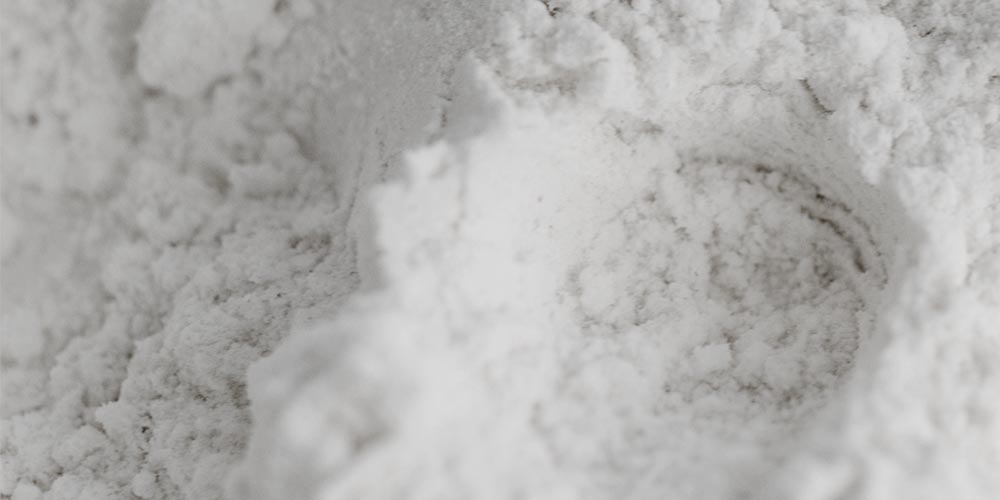
Universal clay can be used as a binder, adsorbent, absorbent, filler, catalyst, alteration agent, flocculant, detergent, stabilizer, thickener, and is widely used in iron ore pellets, casting, drilling, Petroleum, chemical, textile, paper, rubber, agriculture, medicine and other industries. With the development of science and technology, the consumption of bentonite has been extended from the traditional drilling mud and iron ore pellet casting industries to petrochemical, light industry, agriculture, environmental protection, construction and other fields, which puts forward a higher level of processing technology. Require.
Bentonite processing technology-purification
The purification methods of bentonite include chemical purification and physical purification. Physical purification is divided into hand selection, air selection (dry purification), and water selection (wet purification).
- Hand-selected
It is mainly used in the raw soil with high content of montmorillonite, bentonite raw ore → crushing → drying → hand selection → grinding → packaging.
- Dry purification / winnowing
Suitable for ore with high content of montmorillonite (greater than 80%), finer grain size and coarser gangue mineral quartz, feldspar, bentonite ore → natural drying → crushing → air drying → grinding → air separation and classification → packaging
- Wet purification/water selection
It is suitable for low-grade bentonite containing 30%-80% of montmorillonite content in raw ore, or bentonite containing feldspar and quartz with finer particle size, bentonite raw ore → crushing → pulping (adding dispersant) → sedimentation and separation → Centrifugal separation of the suspension (adding flocculant) → filtration → drying → disintegration and depolymerization → packaging.
- Chemical purification
The method of using chemical reagents to chemically react with the impurity minerals in bentonite to remove them, usually using strong alkali to remove cristobalite and quartz, the reaction principle is: 2NaOH + SiO2 = NaSiO3 + H2O.
- Compound purification
In the actual purification process, physical and chemical methods are often used for composite purification. Raw ore → surface treatment of minerals with hyposulfite or sodium dithionite → treatment of bentonite with alkali at a temperature greater than 60°C → flushing with dehydration water at least once → renew Configure suspension → homogenizer treatment → drying → crushing → packaging and transportation.
Bentonite processing technology-modification
The surface modification of bentonite is to use physical, chemical, mechanical and other methods to change the surface structure, surface energy, electrical properties, adsorption performance and reactivity of bentonite, so as to improve the use value of bentonite.
- Mechanical activation
Mechanical force vitality is the process of using mechanical force to improve certain activities and properties of bentonite, including ultrafine pulverization and extrusion.
Ultra-fine crushing: The strength of the effect is related to the crushing time, the type of crushing equipment, the way of mechanical force, and the crushing environment.
Squeezing effect: stripping effect, temperature effect, bond breaking effect.
- Thermal activation
What factors are related to the degree of thermal activation?
It is related to the sintering time: generally, the sintering time is 1 hour.
It is related to the roasting temperature: the roasting temperature is 400-450 degrees Celsius to achieve the purpose of activation.
Comparative data of specific surface area of bentonite before and after roasting
| Adsorbent | Natural bentonite | 400℃ calcined soil | 450℃ calcined soil | 600℃ roasting soil | 700℃ calcined soil |
| Specific surface area (m2/g) | 310 | 360 | 370 | 86 | 40 |
- Acid activation
Bentonite acid activation is the use of various acids (sulfuric acid, nitric acid, hydrochloric acid, oxalic acid) to activate bentonite under certain conditions with different concentrations.
- Organic activation
Wet process: raw ore crushing→dispersed pulping→purification→modification→covering→filtering→drying→crushing→product packaging
Pre-gel method: raw ore crushing → dispersion pulping → modification and purification → water extraction → heating to remove water → pre-gel product
Dry process: purified pin montmorillonite + covering agent → heating and mixing → extrusion → drying → crushing → packaging
Bentonite processing technology-sodium modification
Compared with calcium bentonite, sodium bentonite has higher water absorption and thermal stability, stronger plasticity and cohesiveness, and better colloidal suspension thixotropy and lubricity. Therefore, the sodium modification of calcium-based pot run soil is one of the effective ways to improve its application value and economic value.
- Sodiumization principle
The sodiumization of bentonite is mainly to use Na+ to replace the replaceable cation Ca2+ or Mg2+ between the bentonite crystal layers. The reaction formula is as follows: Ca2+ - montmorillonite + 2Na+=2Na* - montmorillonite + Ca2+
- Sodiumization method
Sodiumization modification mainly includes suspension method (wet method), yard sodiumization method (ageing method) and extrusion method, etc. Raw materials → hand selection → crushing → purification → sodiumization → extrusion → drying → grinding → packaging
After more than 100 years of research and application, bentonite and its deeply developed products have played an important role in the fields of industrial and agricultural production and science. In the future, research on the effective utilization of bentonite should be strengthened, and high-quality, refined and cutting-edge products of bentonite should be vigorously developed, and the development towards the direction of large-scale production and serialization of products.
Article source: China Powder Network
Influencing factors of jet mills used in the battery material industry
Using jet mill processing, the average particle size of materials can reach 1-45 microns, and the particle size range can be adjusted arbitrarily. It is an indispensable processing equipment in the battery material industry. So the question is, to what extent can the jet mill grind? It is related to the following factors:
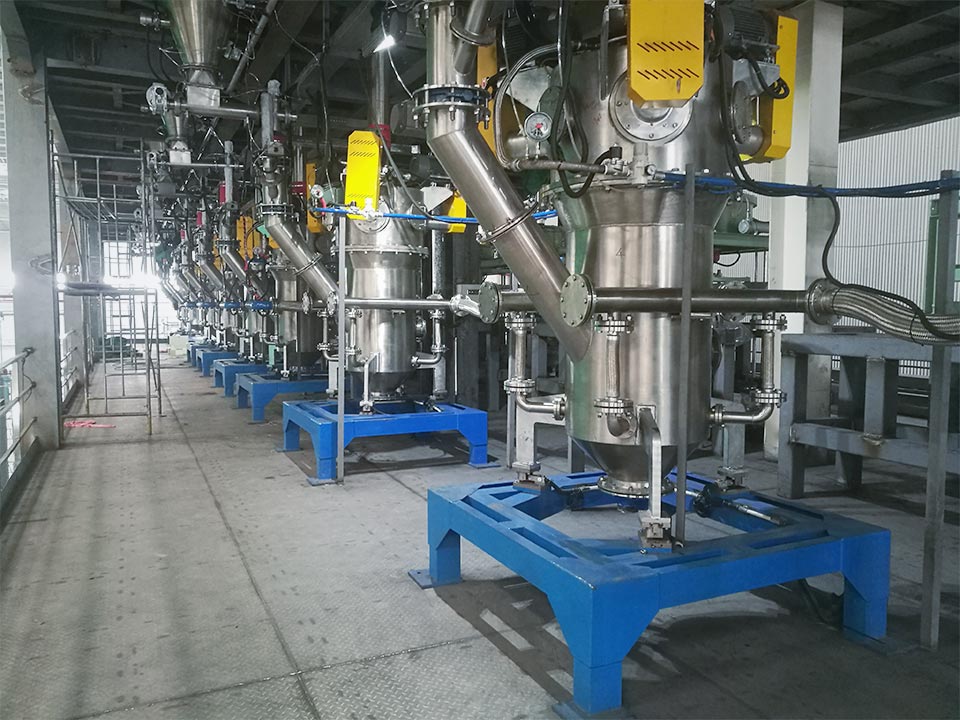
1. For the initial fineness of raw materials, the jet mill generally requires the feed to be below 50 mesh.
2. It is related to the physical properties of the material, the fluidity in the material, and the uniformity of the particles. Some materials have poor fluidity, many impurities, and high solvent content. There may be material blocking during the production process. At this time, special equipment is needed to do this. Not all materials can be ground with standard equipment to achieve the fineness of grinding. .
3. It is related to the grinding pressure in the grinding process. The feed pressure of some equipment is greater than the grinding pressure, and the grinding pressure of some equipment is greater than the feed pressure. Specific materials need to be specifically designed.
4. It is related to the feeding speed. Not all materials have good fluidity. Whether it is screw feeding or vibrating feeding, the feeding process is a very important factor. Some very fine materials are difficult to feed. , At this time, it is necessary to use a dedicated and personalized configuration to achieve the feeding effect.
5. It is related to the degree of optimization of the jet mill. There are many manufacturers of jet mills, but the fineness of the same material produced by different manufacturers is different, even if it is made by different models of equipment from the same manufacturer. There are also differences. However, based on experience, the effect of a larger grinding disc is better than a smaller one.
6. It is related to the operation method of the operator's proficiency. Some equipment requires a small and then large pressure operation to start up, and some are directly operated in one step.
It can be seen from the above that the fineness of the jet mill is not fixed, but adjustable. It is for this reason that it has become a favored processing equipment in various industries, which can meet the diverse needs of different users.
Jet mill completes ultrafine grinding and classification at the same time
The jet mill is a mill that integrates the dual functions of grinding and jet classification. It is developed to meet the market's demand for high-end mills. The jet mill is equipped with a sorting chamber to sort the particles in the high-speed swirling flow. The fine powder that has lost the centrifugal force is introduced into the collection system to become a finished product, and the coarse particles sink to the grinding cavity along the outside of the swirling flow under the action of centrifugal force, making it Was ground again. The material of the mobile jet mill is conveyed from the check valve to the storage hopper, and sent to the grinding chamber through the screw feeder. The supersonic air enters the grinding chamber through several spray nozzles, and is sprayed to the center to fluidize the material and be ground. The material is crushed under extremely strong impact. This machine is a vertical-shaft reflective pulverizer, which can complete the two processing steps of micro-grinding and particle sorting at the same time. It is suitable for processing a variety of materials in various industries. The particle size can be adjusted arbitrarily without stopping the machine.
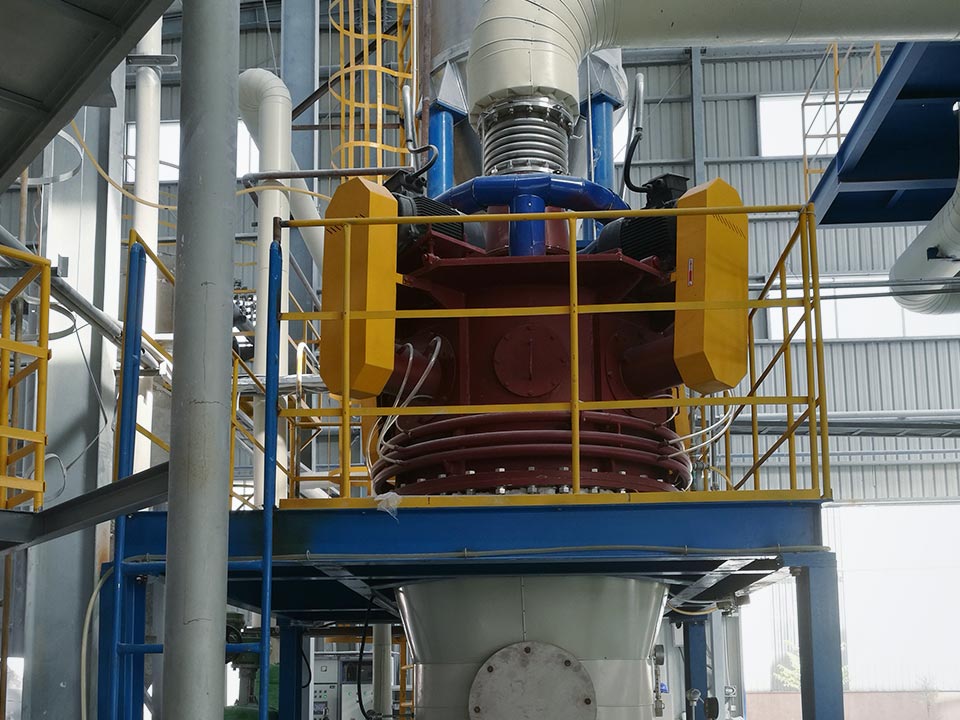
The jet mill is mainly composed of frame, upper box, middle box, lower box, feeding device, grading motor, main motor, rotor assembly and other components. The rotation of the rotor is obtained by the main motor driving the main shaft through the V-belt. The rotation of the grading wheel is achieved by the grading variable frequency motor driving the grading shaft through the coupling. The rotation of the classifier is opposite to that of the grinding disc. The elasticity of the V-belt is adjusted by the tightening bolts to adjust the center distance between the motor and the host, so that the V-belt is moderately tight. The rotor is mainly composed of a main shaft, a bearing seat, a bearing, a rotor, a grinding block, and a V-belt wheel. After the rotor is installed with grinding blocks, the dynamic balance is checked. The rotating speed of the grading impeller can be adjusted freely without stopping the machine, so that the graded product can reach the ideal fineness. The feeding device is mainly composed of hopper, auger, frequency conversion motor, reduction box and other parts. The amount of feed can be obtained by adjusting the speed of the frequency conversion motor, so that the load of the main motor is basically within the rated load range.
Since the rotor assembly and the grading impeller can be assembled after passing the dynamic balance verification, the vibration generated during operation is very small. The whole machine does not need foundation and foundation bolts to install. The rack only needs to be placed on a horizontal ground or supported by shock-proof pads. The position of the electric control cabinet and the host should not be too far away (except in special circumstances, such as grinding conductive materials, etc.). In this way, the load of the main motor can be observed, and the power supply can be cut off in time in case of danger.
The jet mill is used for ultrafine grinding in chemical, food, feed, medicine and intermediates, tobacco, pesticides (wettable powders), pigments, coatings, dyes, ceramics, pigments, colloids, non-metallic minerals and bioengineering industries (Such as calcium carbonate, magnesium oxide, aluminum hydroxide, cerium oxide, phenolic resin, α-starch, pentasodium, mica, etc.).
How does the grinder ensure the aseptic production of APIs?
At present, the raw material drug market is showing the following major phenomena. First, some vitamins have entered a new price increase cycle; second, amino acids have jumped up and are still out of stock; third, the price of trace elements has doubled; fourth, raw materials Monopoly has also reached an outrageous degree. In addition to these, due to the frequent occurrence of drug safety incidents and the increasing attention of drug regulatory authorities to the production of sterile drugs, sterile APIs have become the focus of attention in the pharmaceutical industry.
Sterile APIs usually combine the refining process of the product with the aseptic process as a one-step operation unit in the production process. In the production process of aseptic raw materials, all links must be strictly controlled, especially equipment control. Among them, crushing equipment is widely used.
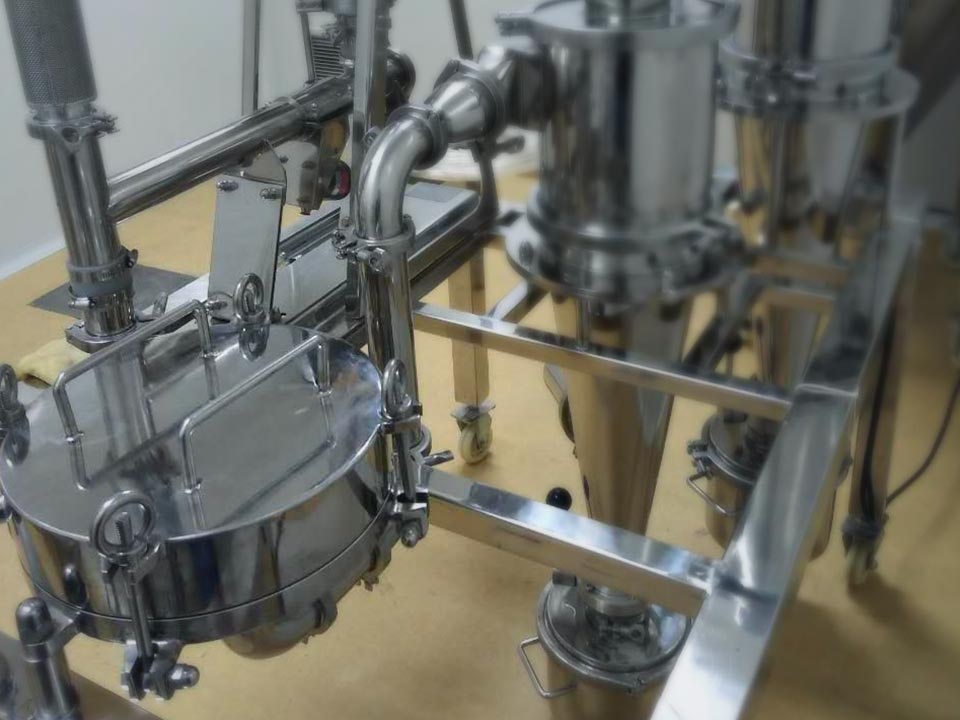
The pulverizer is a device that uses the high-speed relative movement between the movable toothed disk and the fixed toothed disk to crush the materials through the combined effects of the toothed disk impact, friction, and the impact between the materials. Generally speaking, the pulverizer can process hard and difficult to pulverize materials, such as the pulverization of Chinese herbal medicines, rubber, etc., and can also be used as a supporting equipment for the pre-processing procedures of the micro pulverizer and ultrafine pulverizer.
In the application of sterile APIs, some experts pointed out that pharmaceutical companies should use grinders with caution. Generally, it is recommended to use crushing and granulating machines, jet mills or others that can meet the corresponding process requirements and GMP specifications in the production of sterile APIs. The equipment, while examining its manufacturing quality and structure. There are two reasons why it is pointed out that it should be used with caution.
On the one hand, the pulverizer is not consistent with the production process of sterile APIs. In the process of material pulverization, it is easy to produce insoluble impurities and metal particle pollution, can not solve the problem of heat sensitivity, and it is difficult to ensure thorough and reliable cleaning or achieve the elimination. Bacteria requirements. On the other hand, as the aseptic production process usually has more variable factors than the final sterilization process, such as the air cleanliness, temperature and humidity of the production environment, and the operating habits of the staff, it increases the difficulty of its production. In addition, the sterilization of sterile APIs is special, and it is necessary to ensure that there is no heat source, and the sterilization process should be reliable and not be perfunctory. Therefore, special attention should be paid to the cleaning and sterilization of the pulverizer.
The cleaning method of the equipment is exquisite. First, remove the outer cover, flap teeth, sieve, and material hopper, remove the special powder receiving bag, move the powder receiving bag to the laundry room, and clean it according to the regulations. Secondly, the outer cover, flapping teeth, sieves, and material bucket should be moved to the ware washing room, soaked in 75% ethanol for 5 minutes in a stainless steel bucket, then brushed with a brush, and rinsed with purified water until clear.
After cleaning, it is the process of wiping dry. At this time, use a special rag for the inner surface of the equipment and a special rag for the outer surface of the equipment to wipe the inner and outer walls of the equipment until they are wet. Then use a brush dipped in 75% ethanol to scrub the inner and outer walls of the equipment, rinse with purified water until it is clear, dry the inner surface with a special cloth for the inner surface of the equipment, and dry the outer surface with a special cloth for the outer surface of the equipment. Then wipe the parts contacting the materials with 75% ethanol and let them dry naturally. After all the procedures are completed, put back the outer cover, flap the teeth, the sieve, and the material hopper.
In terms of sterilization, one of the most important aspects of using equipment in a sterile environment is the sterilization after cleaning. The usual sterilization methods include moist heat, dry heat, filtration, radiation, and ethylene oxide sterilization, among which the more effective methods are moist heat and dry heat sterilization. The pulverizer is a device directly in contact with the sterile API. The sterilization of it is usually performed on-line with steam, and then the environment and the appearance of the device are sterilized together with the formalin spray method.
Regarding the application of pulverizers in the production of sterile APIs, pharmaceutical companies should consider various factors, including equipment characteristics, process routes, and GMP as consideration factors. In addition, for equipment companies, it is necessary to strengthen technological innovation, develop a pulverizer that can be used in the production of aseptic raw materials as soon as possible, and constantly improve and improve the performance of the pulverizer in the production of aseptic raw materials.
It is very important to master the operation process of the jet mill
Mastering the operation of the jet mill is very important to the jet mill itself, but many people are not very clear about the procedures of how to operate the jet mill safely, so we need to learn and understand.

All circuits and electrical components of the jet mill should be checked to see if they can work normally. Whether the machine has been grounded, so as to avoid the risk of electric shock when the cabinet is electrified. Whether the machine spindle is stuck, if any, it should be dealt with in time. During the operation of the machine, whether there is any abnormality, stop and check immediately if any. Check whether the blade is tight and whether the blade gap can meet the specified standards. Before using the pulverizer, check whether there are sundries or sundries in the working room, and remove them in time.
Feeding can be started only after the crusher is operating normally. Before shutting down the crusher, stop feeding. Wait until the machine is completely discharged before stopping. Feeding should be even, not excessive, so as not to increase the burden on the machine. During the operation of the jet mill, cleaning, maintenance, etc. cannot be carried out.
The main reasons for the high oil temperature of the lubrication system are: (1) Abnormal wear on the surface of the friction disc or the oil groove; (2) The quality of the lubricating oil does not meet the requirements; (3) The cooling system does not play a cooling role; (4) Lubricating oil The flow is low.
The hydraulic cone crusher oil temperature protection range of the crusher is 21-54℃, beyond this temperature range, the main motor is tripped and powered off under the control of the oil temperature gauge. In summer, the temperature is high. Due to the heavy load, the oil temperature of the two crushed cone crushers is relatively high. After driving for a period of time, the oil temperature will approach or exceed 54°C. In order to protect the equipment, only manual shutdown or automatic tripping is required. After each trip, the internal friction surface needs to be cooled to a certain temperature before driving again. This results in multiple stops in a shift, which seriously restricts the production capacity of cone crushers and affects The improvement of the system efficiency, therefore, the transformation of the cooling system is imperative.
Through analysis and transformation, it can be achieved: reducing frequent opening and stopping caused by excessive oil temperature, and improving the production capacity and system efficiency of the cone crusher.
Cause analysis Due to the high temperature in summer and heavy load of cone crushing, the oil temperature of the lubrication system is too high, and the critical value of the oil temperature gauge tripping and power failure that often reaches or exceeds 54 ℃. This causes the system to start and stop repeatedly in a shift, which severely restricts The normal production capacity of cone crusher affects the improvement of system efficiency.
Application & market of titanium dioxide
Titanium dioxide is a white powdery solid obtained from titanium ore through the sulfuric acid method or the chlorination method. It is considered to be a white pigment with good performance in the world. Titanium dioxide refers to the titanium dioxide whose surface has been treated with inorganic or organic to overcome the original application defects of titanium dioxide. It has the best opacity, best whiteness, gloss, excellent weather resistance, hiding power, dispersibility and other weak, chemical Performance, widely used in industrial fields such as coatings, plastics, paper, rubber and ink, and food fields.
Titanium dioxide is divided into pigment grade and non-pigment grade according to its use. Pigment-grade titanium dioxide is mainly used for white pigments. According to the crystal state, it can be further divided into anatase titanium dioxide (A type) and rutile titanium dioxide (R type). Among them, rutile titanium dioxide has better chemical stability. It is mainly used for high-grade outdoor coatings, light latex coatings, high-grade paper and rubber materials.
Anatase titanium dioxide has the advantages of high whiteness, high refractive index, large difference in refractive index from fiber-forming polymers, non-toxic and harmless, low production cost and wide raw material sources. It can be used as an additive in the production of matting cotton fiber Is applied.
Non-pigment grade titanium dioxide has purity as its main purpose. It is divided into enamel grade, ceramic grade, electric welding grade and electronic grade. Its high temperature resistance and optical properties play a major role.
The sulfuric acid method is the world's earliest industrialized production method of titanium dioxide. The process mainly includes the following aspects: pulverization and acid hydrolysis of titanium ore materials, separation and purification of TiOSO4, hydrolysis of TiOSO4 to form insoluble metatitanic acid, washing, bleaching, Calcining and crushing, surface treatment, etc.
Advantages: The sulfuric acid method can be used to produce two kinds of rutile and anatase titanium dioxide. The process technology is mature, the equipment is simple, the raw material requirements are low, and the price is cheap and abundant.
Disadvantages: The consumption of raw materials is large, the utilization rate is low, the by-products are large, the environmental pollution is serious, and the process is complicated. With the continuous innovation of technology, this production method is constantly being eliminated by enterprises.
The chlorination method is currently a widely used method for producing titanium dioxide in industrial production. The emergence of the chlorination method can not only produce high-quality titanium dioxide, but also solve the problem of the long process flow of the sulfuric acid method, reduce the emissions of the three industrial wastes, and be beneficial to environmental protection. At the same time, this method is easy to realize automated production, which is in line with the requirements of modern enterprises. Production requirements.
Application of Titanium Dioxide
Coatings, papermaking and plastics are the three main application areas of titanium dioxide. Other application areas include ink, chemical fiber, cosmetics, rubber, food industry and medicine. The use of titanium dioxide for non-pigment is mainly in the fields of enamel, ceramics, capacitors, welding rods, catalysts, and the field of nano-titanium dioxide that requires optical properties of titanium dioxide but does not require its covering properties.
- Coating
At present, coatings are the largest application field of titanium dioxide. The TiO2 consumed by the coatings industry accounts for 58% to 60% of the total consumption of titanium dioxide pigments. Titanium dioxide is also the most used pigment in the coating industry, accounting for about half of the cost of coating colorants, and 10% to 25% of the cost of coating raw materials. As a kind of chemical advanced material product, coating has been greatly developed in recent years, and the total output of the industry reached 17.598 million tons in 2018.

- Plastic
Plastics are currently the second largest user of titanium dioxide pigments, accounting for 18% to 20% of the world's total demand for titanium dioxide. The amount of titanium dioxide added to the plastic will vary with its varieties and applications, generally between 0.5% and 5%. At present, the annual output of plastic products is more than 60 million tons, and the consumption of titanium dioxide is about 600,000 tons. Titanium dioxide has excellent weather resistance, hiding power, dispersibility and other physical and chemical properties, which greatly meets and adapts to the production standard requirements of plastic industrial products for titanium dioxide performance and quality.

- Papermaking
The paper industry accounts for 11% of the total consumption of titanium dioxide. The application of titanium dioxide in the paper industry is very similar to that of the plastics production industry. Both are used as basic pigments. In the paper industry, titanium dioxide can also be used as a filler. It is used to improve the optical properties of paper to better enhance its opacity, including improving its brightness, whiteness, smoothness, uniformity, etc.

Performance comparison of different types of titanium dioxide in the field of papermaking
| Paper Classification | Rutile | Anatase | Remark |
| Decorative paper | √ | High anti-aging requirements | |
| High ash paper | √ | The hiding power of anatase titanium dioxide does not meet the requirements | |
| Low ash paper | √ | Good opacity required | |
| Coinage paper | √ | Good opacity required |
- Ink
The whiteness quality of titanium dioxide is guaranteed, the water resistance is strong, the hiding power is large, and the weather resistance, heat resistance and chemical properties are very stable. In the ink industry, titanium dioxide is a necessary production material. Titanium dioxide in the ink not only has the function of improving gloss and aesthetics, but also can improve the properties of the ink.
- Masterbatch
Color masterbatch is developed in modern times and is used in coloring products of plastics and other systems. Its principle is to load an excess amount of pigment in resin to prepare a polymer compound for coloring. The main components include: resin, pigment, dispersant, etc. The core of the development of color masterbatch technology is the compatibility of pigments, dispersants and resins. The goal is to increase the pigment content and coloring effect in the color masterbatch. The key is to improve the dispersion of the pigment in the color masterbatch. Titanium dioxide is widely used in industries such as color masterbatch, especially in some high-end color masterbatch industries, it is one of the necessary coloring raw materials.
- Chemical fiber
The chemical fiber industry (especially anatase) is another important application field of titanium dioxide. Since the molecules in the chemical fiber industry are neatly arranged, the fiber surface is smooth, has a dazzling luster, and is translucent, so it is necessary to add a matting agent before spinning. Titanium dioxide is the most ideal matting material in the synthetic fiber industry.
- Denitration catalyst
Denitration catalyst generally refers to the catalyst used in the SCR denitration system of power plants. In the SCR reaction, the reducing agent will selectively react with the nitrogen oxides in the flue gas at a certain temperature.
From a global perspective, the global effective production capacity of titanium dioxide is about 7.2 million tons, and CR10 (the company with the top 10 effective production capacity) accounts for 65%, mainly in North America, Western Europe, and Japan.
Article source: China Powder Network
Surface modification of nano calcium carbonate
Nano calcium carbonate is a new type of ultrafine solid powder material developed in the 1980s, and its particle size is between 0.01 and 0.1 μm. It is precisely due to the ultra-fineness of nano calcium carbonate particles that have produced characteristics that ordinary calcium carbonate does not have, so nano calcium carbonate is widely used in various fields.
Nano calcium carbonate has a 50-year history of development and is widely used in various fields.
| Nano calcium carbonate | Purpose | Performance improvement |
| Plastic | Good compatibility with resin, improve the rheological properties of products, etc. | |
| Papermaking | Improve the bulk density, apparent fineness and water absorption of paper. | |
| Rubber | Reinforce, fill, color, improve the processing technology and product performance. | |
| Paint | Improves the thixotropy of the blue system, the adhesion of the high-choice paint, the scrubbing resistance, and the stain resistance. | |
| Other | In the feed industry, it can be used as a calcium supplement to increase the calcium content of feed. |
Because nano calcium carbonate has the characteristics of large surface energy, low dispersibility and hydrophilic surface, it is incompletely dispersed in organic media, and nano calcium carbonate cannot be directly used in organic media.
The purpose of nano-calcium carbonate modification is to reduce the cohesion between particles and improve its dispersibility; improve surface activity; improve compatibility with other substances; improve acid resistance; prepare nano-calcium carbonate with specific crystal shapes for use in different industries.
The modification methods of nano-calcium carbonate usually mainly adopt grafting and coupling reactions, that is, connecting certain organic groups (such as carboxyl groups, etc.), coupling agents, surfactants, etc. on the surface of nano-calcium carbonate. Commonly used modifiers include surfactants, polymers, and coupling agents.
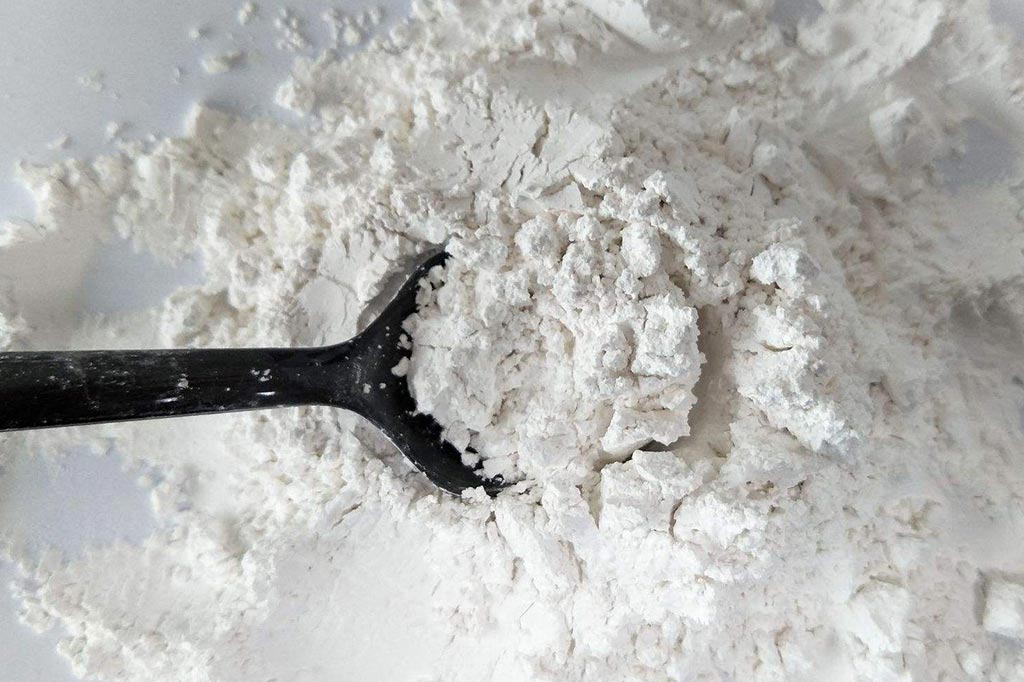
Surfactant
The surfactant chemically adsorbs or reacts on the surface of the calcium carbonate particles to form a layer of lipophilic structure, which has good compatibility with fillers and resins, and greatly reduces the viscosity of the polymer. Commonly used surfactants are fatty acids (salts), resin acids, lignin, and anionic/cationic surfactants.
Polymer
The polymer modifies the surface of the nano calcium carbonate, which can coat the surface of the nano calcium carbonate to form a complete and dense coating layer, improve dispersibility and increase acid resistance. Commonly used polymers include acrylic acid, salts, and terpolymers.
Coupling agent
Part of the groups in the coupling agent molecules react with functional groups to form strong chemical bonds, and the other part of the groups can undergo chemical reactions or physical entanglement. With the help of the monolayer of "bridging", the minerals and organisms can be combined. The very different materials are firmly combined. Commonly used coupling agents are classified into organosilicon series, titanium series, aluminum series, chromium series, etc. according to their core elements. The most commonly used coupling agents are titanate coupling agents and organosilanes.
Surface modification method
- Local chemical reaction modification method
The local chemical reaction modification method mainly uses the chemical reaction between the functional groups on the surface of the nano-calcium carbonate and the treatment agent to achieve the purpose of modification. The specific process is divided into two types: dry method and wet method.
The dry method is to put nano calcium carbonate powder into the modifier, and then put in the surface modifier for surface treatment after running. Dry modification is simple and easy, direct packaging, easy to transport, but the obtained powder is not uniform, suitable for coupling agents such as titanate.
Wet modification is to directly add the modifier to the nano-calcium carbonate solution for surface modification treatment. The modification effect of wet modification is good, but the process is complicated and the transportation is inconvenient, so it is suitable for water-soluble surfactants.
- High-energy modification method
The high-energy modification method is a method for surface treatment of fillers by means of plasma or irradiation treatment. The technology is complicated, costly, low production capacity, and unstable modification effect, so it is less used in industry.
- Mechanochemical method
The mechanochemical method is more effective for calcium carbonate with large particles. It can increase the active points and active groups on the surface of nanometer calcium carbonate, and enhance the effect of organic surface modifiers.
From the development trend in recent years, we make a simple prediction on the market trend of nano calcium carbonate in the future: from the situation in the past few years, nano calcium carbonate has been showing a growing trend, and in the future, it will be at a rate of 20%. Continued growth. The scale of the market will also continue to expand, and the hidden potential of the market will continue to be explored.
Article source: China Powder Network

